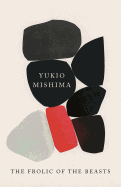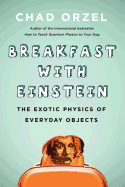You Can't Buy Too Many Books for the Holidays
As we fully immerse ourselves in the holiday frenzy this week, I want to offer a bit of advice to my fellow lifelong readers. Even though your to-be-read piles have become a biblio-skyline, consider infinity and relax. You cannot buy too many books this time of year, either as gifts or for yourself. It's mathematically and philosophically impossible.
In The Eyes of the Heart: A Memoir of the Lost and Found, Frederick Buechner considered his personal library and a particular title that, "like a great many other books I own, I have never read. ('Why on earth would I want to do that?' a friend of mine answered when somebody asked him once if he had read all his.)."
 Having more books than time is a good thing because we don't read enough (according to our own unforgiving standards), and we never will. If you decided, starting tomorrow, to read a book every day for the next 10 years, you would consume 3,650 books (leap years, I know, but I'm rounding off). A mere drop in the book bucket.
Having more books than time is a good thing because we don't read enough (according to our own unforgiving standards), and we never will. If you decided, starting tomorrow, to read a book every day for the next 10 years, you would consume 3,650 books (leap years, I know, but I'm rounding off). A mere drop in the book bucket.
 Don't worry about it. Buy more books! If you're not sure what to give the readers on your list, give them a book about books. My recent favorites include Damon Young's The Art of Reading (Scribe US); James Mustich's 1,000 Books to Read Before You Die: A Life-Changing List (Workman); Susan Orlean's The Library Book (S&S); and Anne Bogel's I'd Rather Be Reading: The Delights and Dilemmas of the Reading Life (Baker Books). All great reads that would make excellent gifts.
Don't worry about it. Buy more books! If you're not sure what to give the readers on your list, give them a book about books. My recent favorites include Damon Young's The Art of Reading (Scribe US); James Mustich's 1,000 Books to Read Before You Die: A Life-Changing List (Workman); Susan Orlean's The Library Book (S&S); and Anne Bogel's I'd Rather Be Reading: The Delights and Dilemmas of the Reading Life (Baker Books). All great reads that would make excellent gifts.
Remember, you can't keep up, so rather than worrying about your TBR pile, consider infinity from a reader's perspective as a beautiful set of magical bookends between which, theoretically, all of the titles ever printed would fit. How many books is that? Enough for now, with ample room for more. Always. --Robert Gray, contributing editor




 Book you're an evangelist for:
Book you're an evangelist for: Cormac McCarthy's writing style might be flippantly described as flirting with run-on sentences and not using much punctuation and making the reader research 19th-century horse tools and esoteric desert geology and creating cool new compoundwords. He is also among the finest living (or dead) novelists of any country. For those lacking the patience or guts for Blood Meridian (ditto the latter for The Road), McCarthy's Border Trilogy is a more romantic vision of western adventure, following the same intertwining families between All the Pretty Horses (1992), The Crossing (1994) and Cities of the Plain (1998).
Cormac McCarthy's writing style might be flippantly described as flirting with run-on sentences and not using much punctuation and making the reader research 19th-century horse tools and esoteric desert geology and creating cool new compoundwords. He is also among the finest living (or dead) novelists of any country. For those lacking the patience or guts for Blood Meridian (ditto the latter for The Road), McCarthy's Border Trilogy is a more romantic vision of western adventure, following the same intertwining families between All the Pretty Horses (1992), The Crossing (1994) and Cities of the Plain (1998). 










